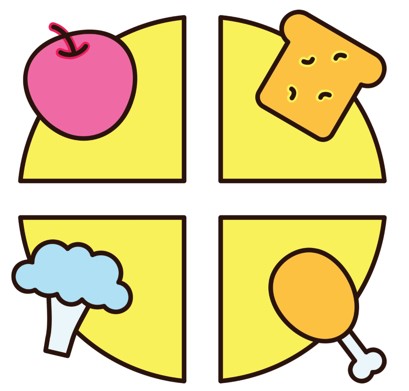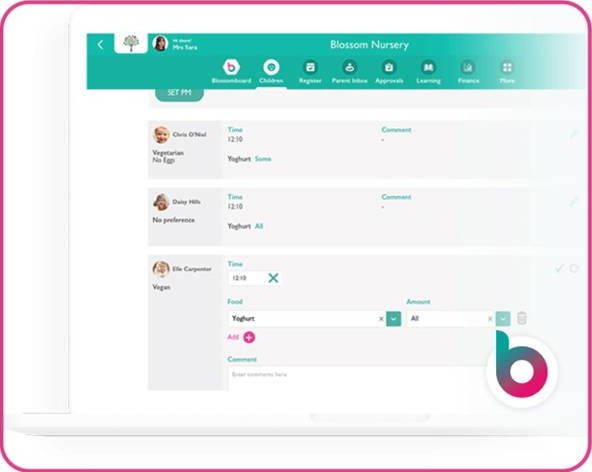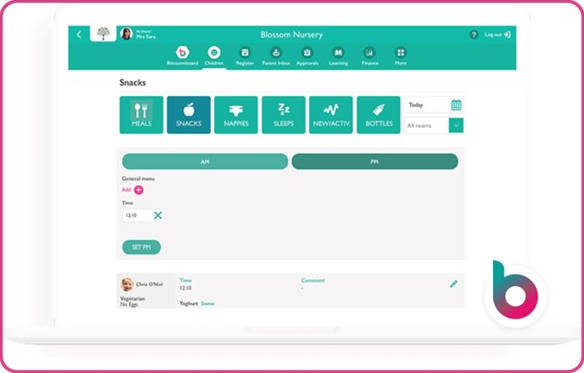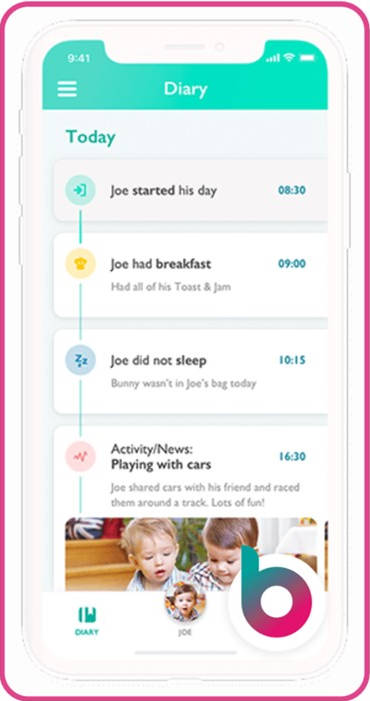Health and nutrition are the key to quality development, and you are in the business of building healthy brains and bodies.
The education sector is on the brink of change. The number of obese and overweight children is increasing, the activity levels of children are on a steady decline and fast, processed food is everywhere.
Ofsted has recently reviewed the PE provision in schools, junk food is being banned off the television, and health and wellness are becoming more and more prominent in curriculums and inspection handbooks. Meaning now is the perfect time to evaluate the healthiness of your nursery provision.
In this article, we unpick the key aspects of a healthy nursery and provide a free downloadable audit for your nursery.
Skip to the bottom if you just want the download!
What makes a nursery healthy?
A healthy nursery isn’t just about wiping down surfaces and making sure the toys are clean – though that’s important, too! It’s about creating an environment where little ones thrive in every way possible.

When you start to assess how healthy your nursery is, it can be tricky to know where to start.
- Are the meals nutritious and balanced, setting children up with good eating habits for life?
- Do your daily activities get them moving, developing strong muscles and coordination?
- Are staff tuned into children’s emotions, helping them build resilience and social skills?
- Let’s not forget sleep – are nap times calm and consistent, giving children the rest they need to grow and learn?
Before we get to the free health audit download, let’s look at the big hitters when it comes to nursery health.
Healthy nursery provision is a topic closely related to health and safety in the early years. Where health and safety cover statutory requirements and black-and-white processes, a healthy nursery explores more quality of provision and can make your nursery stand out to prospective parents.
Nursery menus and nutrition
It’s relatively easy to comply with the EYFS framework’s legal obligations regarding providing food and drink at nursery.
The sentence below is what your nursery is legally required to offer:
‘Where children are provided with meals, snacks, and drinks, these must be healthy, balanced and nutritious. Fresh drinking water must always be available and accessible to children.’
Knowing nutrition balances your nursery menus and correctly fuels children’s growing brains and bodies. We all know this, and it’s a concept Louise Mercieca explains in depth on our Blossom podcast episode all about EYFS nutrition. She also explored nutrition myths in another blog post.
A balanced diet for toddlers and babies
When you think of a balanced diet, does your mind cast back to school lessons where you placed images of food groups onto a plate? Us too.
In reality, a balanced diet should grow with the child’s development. Having something for each food group is one of the key myths surrounding nursery nutrition. Children’s brains develop at a faster pace than us mere adults. They need to power the development process with the right types of food fuel (essential fatty acids– EFA).

Too much of one food group and not enough of another leaves children lacking the nutrients they need to fuel their brains and bodies.
If we use the government’s menu examples as a balanced diet guideline, your nursery children will, at best, have a plate with a balance of starchy foods, fruit and vegetables, pulses, other proteins, and dairy (or alternatives).
Parents want to know their child is getting the best possible start. Celebrate your nursery menu and its nutritional value. Consider planning it by developmental stages.
When you perfect your nursery menu, you’ll want to streamline the admin associated with tracking and informing parents. Blossom’s Children’s Diary makes the process of applying the meal to the child’s profile, factors in allergies and dietary requirements, and informs parents quickly and efficiently.

Toddler mental health
When evaluating how healthy your nursery setting is, toddler mental health should be up there with the top priorities.
A well-thought-out environment plays a huge role in promoting self-regulation and helping children manage their emotions, behaviours, and reactions.
A common Ofsted inspection theme is the implementation of PSED and self-regulation in nurseries. Identifying how nurseries implement Personal Social and Emotional Development (PSED) activities and how the nursery environment champions emotional resilience.
And for good reason! Strong self-regulation skills set children up for lifelong emotional resilience.
But this doesn’t happen by chance – you’ll need the right practitioner CPD plan and training to spot early signs that a child may need extra emotional support.
Your whole nursery team should also actively model good mental health practices, incorporating mindfulness, breathing exercises, and even simple meditation to build mentally healthy habits in toddlers.
Creating a calm, supportive space where children feel safe expressing their feelings is not only beneficial but essential for their well-being and future development.
EYFS physical development and movement
Physical development is a cornerstone of a healthy nursery, and it’s about much more than just running around outside!

Your provision should support all aspects of physical growth, including fine and gross motor skills, spatial awareness, and risk management. Plenty of physical development activities will help to build these skills.
To evaluate the healthiness of your physical development provision, you first need to understand what falls under the physical development umbrella.
- Are there opportunities for little hands to practice fine motor skills like threading, mark-making, and manipulating small objects?
- Does your outdoor space encourage gross motor activities such as climbing, balancing, and jumping to build strength and confidence?
- Importantly, are children learning to assess risks, like navigating different surfaces or using equipment safely, rather than being overly restricted?
A truly healthy setting balances challenge and safety, fostering independence and an active lifestyle from an early age. Regularly reviewing resources, staff engagement, and daily movement opportunities can help ensure your nursery is meeting (or exceeding!) EYFS expectations.
Sleep health in babies and toddlers
Sleep is vital to a child’s health and development, and nurseries play a key role in ensuring babies and toddlers get the rest they need.
There’s little mention of sleep health in the EYFS framework. Nurseries are required to follow the latest guidance from the NHS about safe sleeping practices.
These include:
- Always placing babies on their backs to sleep
- Babies being in feet to foot position in cots
- Keeping their faces away from blankets or covers
- Being suitably supervised and monitored
- Having a mattress that is in good condition with clean, regularly washed bedding
- Having a calm sleeping environment

Assess whether your nursery provides a calm, restful space with appropriate lighting, noise levels, and cosy sleep areas to support healthy sleep. Some practitioners favour softer lighting, like fairy lights, over the main light in baby and toddler rooms. (This may also reduce your electricity bill!)
Sleep training can also benefit your nursery team. It ensures staff understand age-appropriate sleep patterns and how to support children who struggle to nap.
Having extra knowledge in an area where parents will appreciate additional support also greatly boosts your nursery’s reputation. We all know the damage a danger nap can have on a child’s cooperation levels.
Parents naturally want to track their child’s sleep progress, and tools like Blossom’s Child Diaries make it simple to log and share nap times. These tools help parents maintain healthy sleep habits between nursery and home.

Your free downloadable health audit
Want to see how healthy your nursery really is? Click the link below to download our free Nursery Health Audit!
This handy checklist covers all the key areas discussed in this blog– nutrition, mental health, physical development, and sleep – helping you evaluate your provision with confidence.
With a list of essential questions, you can easily assess whether your setting meets EYFS expectations and promotes the best possible environment for children’s well-being.
Want to be the first to access useful documents like this? Subscribe to our Blossom blog to get the latest articles straight to your inbox.